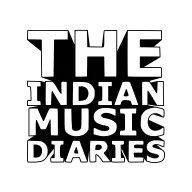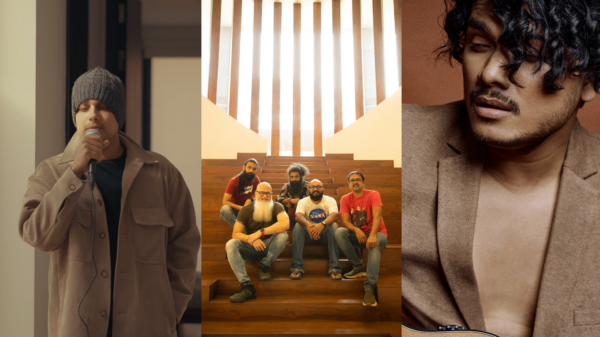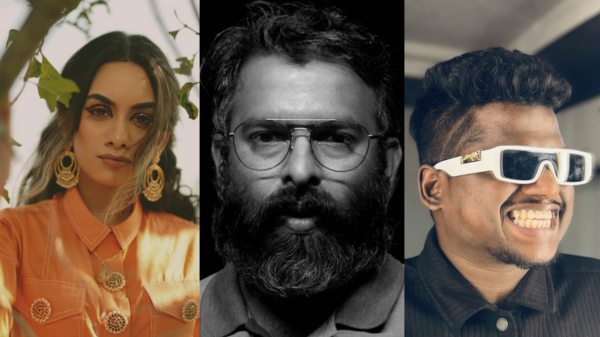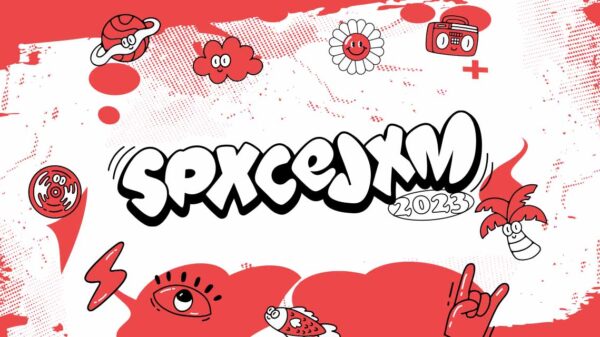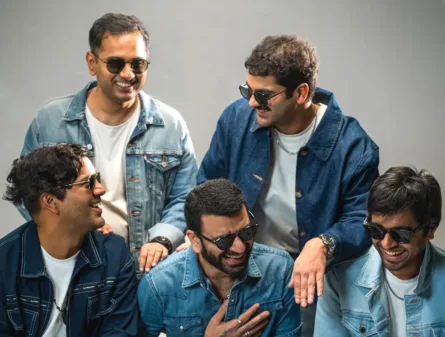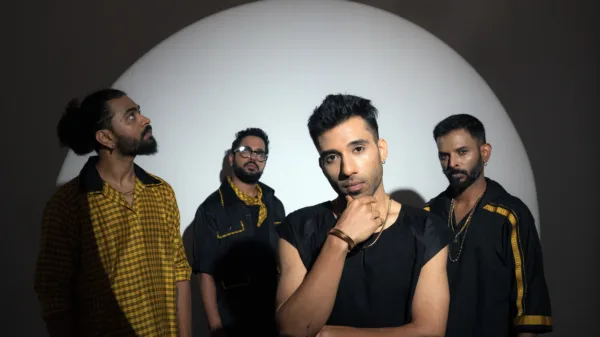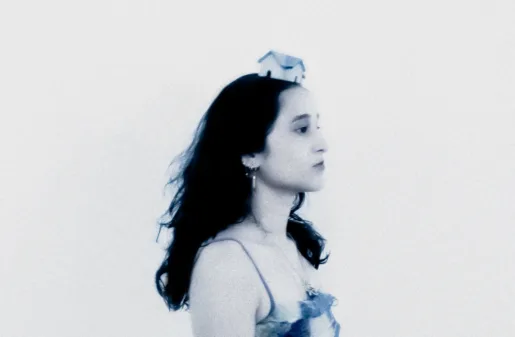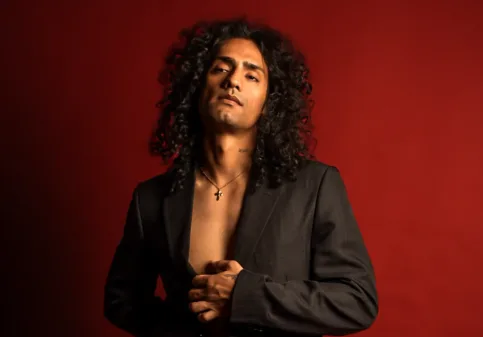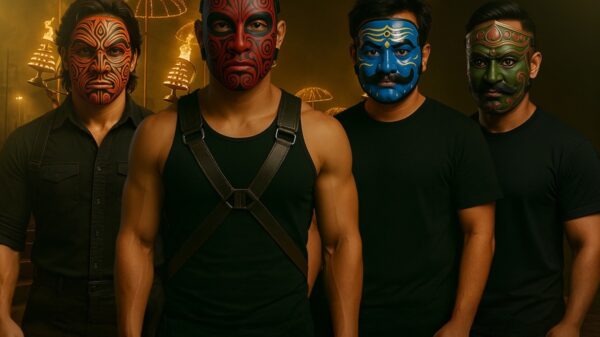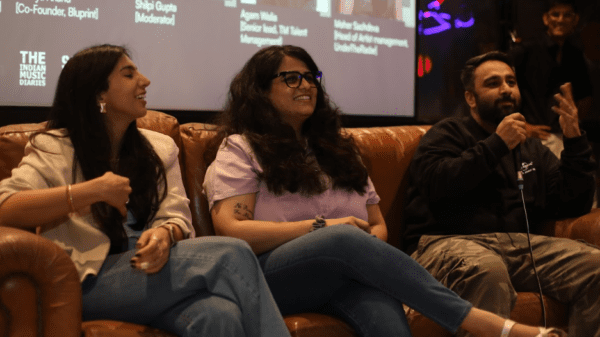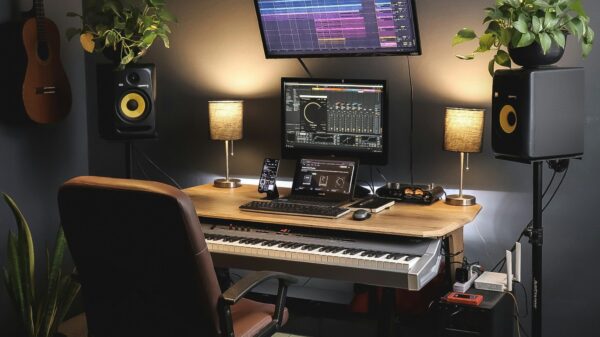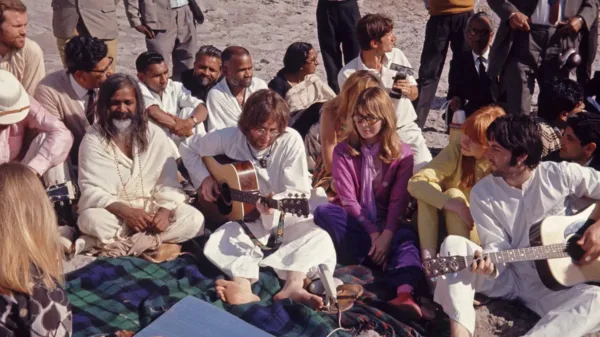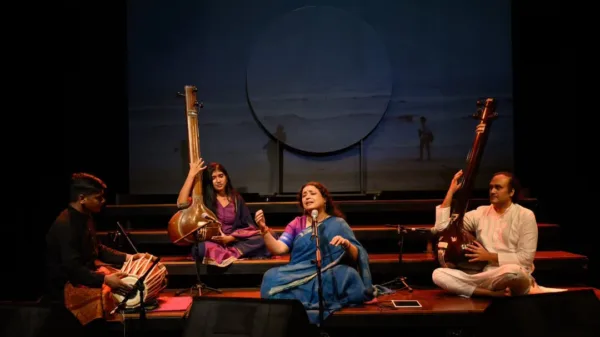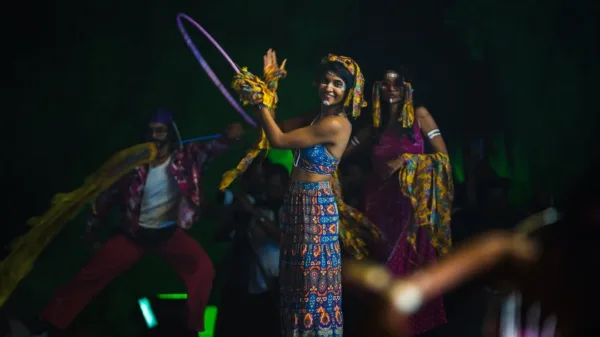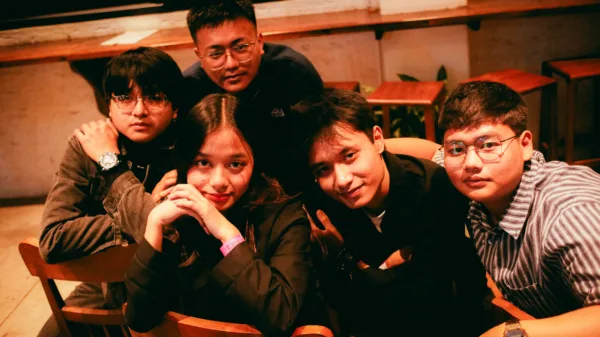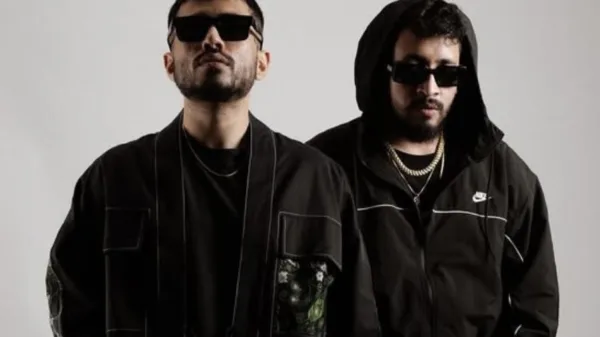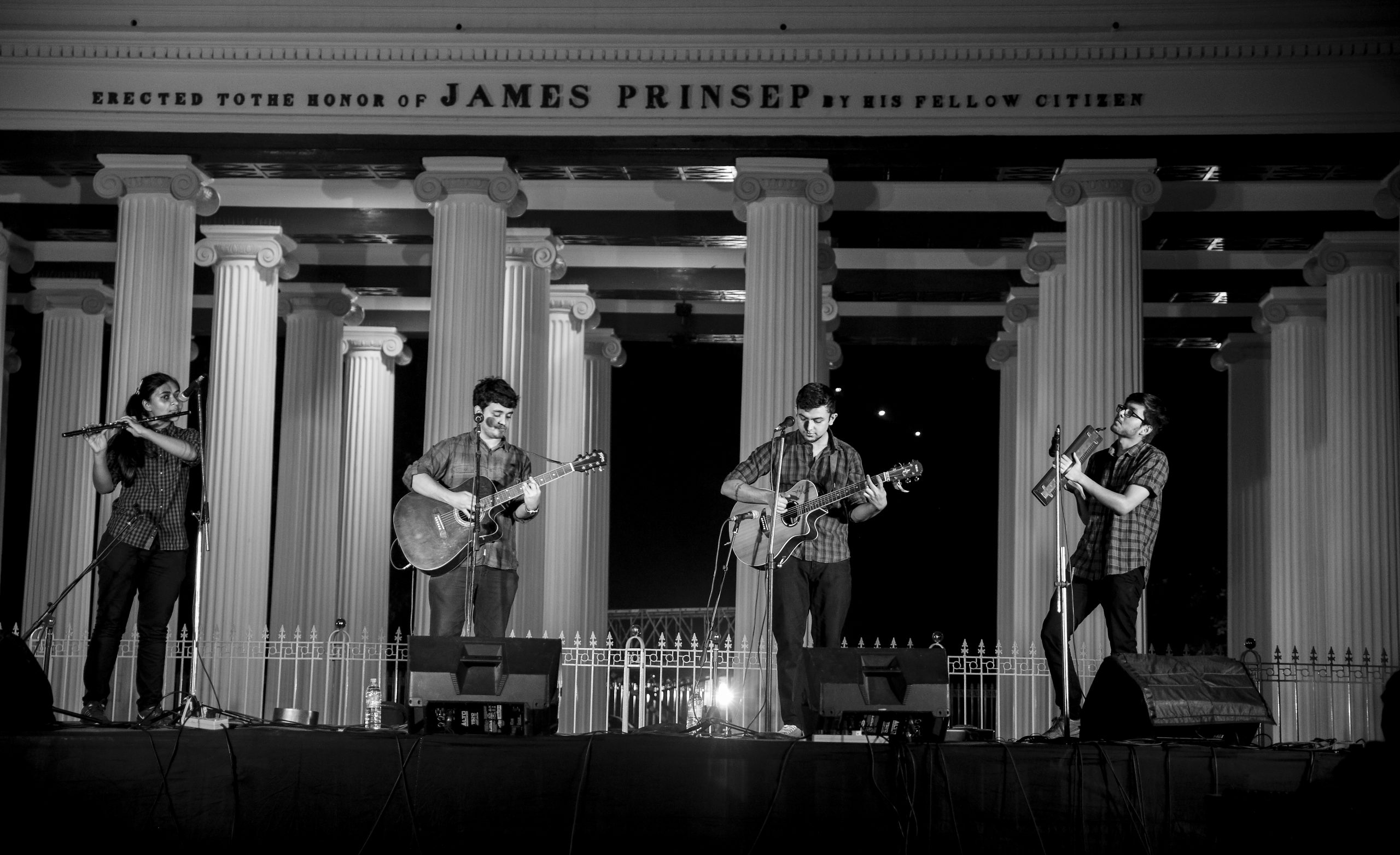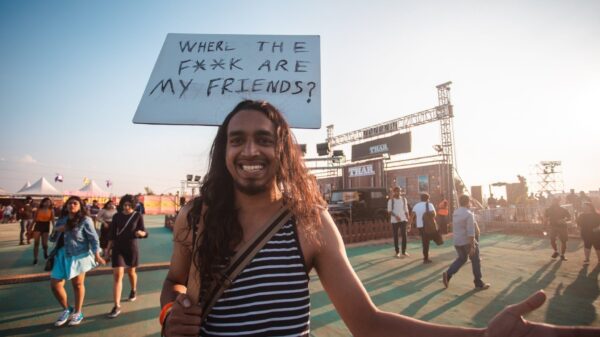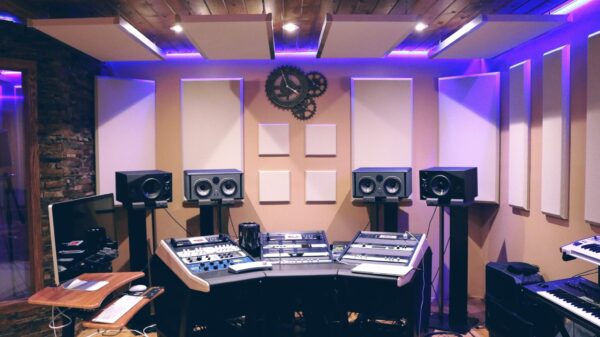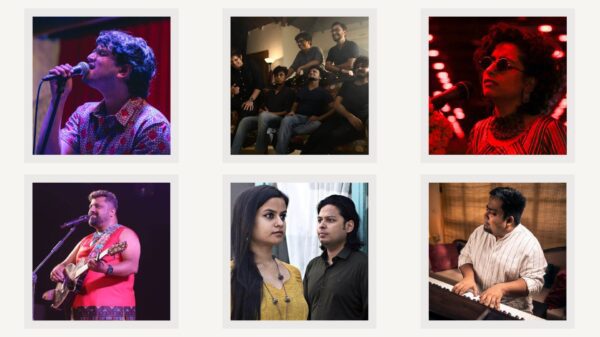We recently got in touch with, Whale In The Pond, a Kolkata based dream-folk band, the brain child of Sourjya Sinha who hails from Silchar in Assam. Whale In The Pond finally took shape after Sourjyo and Shireen worked on composing original music together for a twenty-five song musical. The band believes in the spirit of DIY and happens to record & produce their music on their own, in their own set up. We spoke about their latest record, ‘Dofon’ , which is a Sylheti-English bilingual album that explores themes of political unrest, global climate crisis and approach of the end of the world. Further we spoke about how the current government in power is using Bollywood to influence masses and how they have used the same instrument to process various different sounds for the album. Read the entire interview to find out more.
1. Tell us a bit about your band and what’s the significance of the name?
We are a 4 piece multi-instrumental dreamfolk band from Kolkata. My (Sourjyo) childhood home in Silchar had a pond next to it and the family fished there. My mother used to tell me that a whale resides at the bottom of the pond and being a child and generally stupid, I would believe that. Whale in the Pond conjures this mental image of a magical creature in the most ordinary of places. It also has the lonely/sad connotation of a solitary whale stuck forever. But what I interpret personally is the elusive catch. 7 year old me would believe there’s a whale and spend hours waiting to catch it. It would never come to fruition of course, but the hope is still always there.
2. What bands/artists are your biggest influences?
We all have varied tastes, so I just asked everyone for their top 5 (which changes from time to time):
Sourjyo: Damon Albarn (Gorillaz, Blur), The Beatles, Radiohead, Sufjan Stevens, Tame Impala
Shireen: Queen, Prokofiev, Igorrr, Saar Hendelman, Bach
Sagnik: Tagore, Chopin, Hariprasad Chaurasia, Steven Wilson, Dream Theatre
Deep: Andy McKee, John Butler, Meshuggah, Dave Brubeck, Newton Faulkner
In terms of what influenced the album, we explored a wide range of genres, from regional folk songs to flamenco, bossa nova and even EDM.
3. Tell us in detail about “Dofon” and the themes that you have touched upon to make the record.
Dofon is a concept album about the various ways we’re ushering into the apocalypse. The shitshow that has been this year was nicely set up by 2019, with the heat wave in May, the Australian bushfires, the CAA-NRC protests and the subsequent attack on free speech and rights by the govt. Having family in Assam, the latter issues directly affect me and the songs reflect that. Dofon is about all of those things and more. All the songs are tied together by an overarching narrative, which culminates in a striking climactic image that forms the backbone of the entire album.

4. As a band you use a lot of folk instruments and it heavily reflects in your sound. Can you shed some light on that aspect and if you’ve used any unconventional instruments for “Dofon”?
Shireen answers this: “We don’t actually use that many folk instruments. The folk influence is purely stylistic to the music itself, and not dependent on the instruments we use. I don’t think we necessarily used unconventional instruments as much as processed them in an unconventional way. For instance, melodica appears in 2 songs on the album, in Dofon it’s processed to sound like a harmonium drone, and in WIYH its supposed to sound like an accordion in a European street band. The same instrument used in 2 very different ways. Same with mandolin: in Dofon its meant to be a stark bringer of a harsh truth, in Kite/LOON its for a dreamy floaty spacey effect. We like getting the most out of the instruments that we do have and using them in different ways.”
5. What has been the most exciting part of the process involved in making this record?
We recorded the entire thing in Deep’s bedroom and it was mixed and produced on Shireen’s laptop at her place. It’s mostly a very frustrating process, which includes recording late at night to deal with noise issues after spending the day doing our individual jobs. So we looked forward to the tiny joys afterwards, like playing Uno or getting dinner together somewhere.
Recording Dolinman for Dofon (the song) was also a highlight. We intended that song to be 4 minutes long but he just kept playing, and we kept recording. We couldn’t cut anything out of that recording session so the final song stands at 7 mins and 14 seconds, our longest yet. We needed his magic and he delivered.
6. Given the current socio-political scenario of our country, what do you think is your responsibility as an artist?
Our responsibility now is to be as vocal as we can be and stand our ground. It’s not unreasonable to think that we are headed towards a fascist dictatorship. Our art needs to reflect the times we live in. I make it a point to have underlying socio-political themes in my songs, which might not be direct allusions sometimes but it’s there. The hiphop scene is doing a great job in that regard. The indie scene needs to step up and speak out, especially the ones at the top with impressionable and sizable audiences. I believe art can bring change and influence the minds of people, just look at how the government is using Bollywood.

7. As a band hailing from Kolkata, how different do you think the independent scene there is compared to other metro cities?
Deep answers this: “In my opinion, Kolkata has a space for you to play your own music. Whatever that may be. And if done right, people turn up. The audience here seems generally supportive of original music. Might not be the most commercially viable situation, but there’s definitely a market here.”
8. An Indian independent artist that you would want to collaborate with and why?
Oh, loads. Parekh and Singh to begin with. I (Sourjyo) feel like we would complement each other well and fill in gaps very nicely. Sambit Chatterjee of AWKS and numerous other projects, we really love him and hopefully can work on something someday. Mali, because of the simplicity yet interesting approach she has to her music. We have been fans since we saw her at Weekender Meghalaya the day before our set. And Aditi Ramesh, because her style is quite unique and our instruments in her songs could be very interesting to say the least. In terms of visuals, we love Anoop Bhatt’s work. One of the finest illustrators working in the music scene today.
We have already collaborated with Dolinman (mandolin on Dofon) and Rivu (synths on Nova), so let’s see what the future holds.
9. What’s your take on the independent music scene in India?
It is growing massively. I (Sourjyo) think it might be realistic to expect full on mainstream recognition in the future, to rival that of Bollywood’s monopoly. We’re already seeing a lot of indie songs become part of general pop culture, which is quite a big deal. Let’s just hope the pandemic doesn’t kill the live music scene for 2 years.
